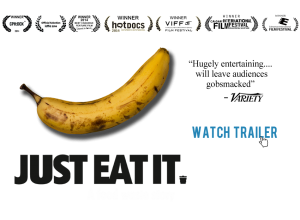Creating a Circular Economy
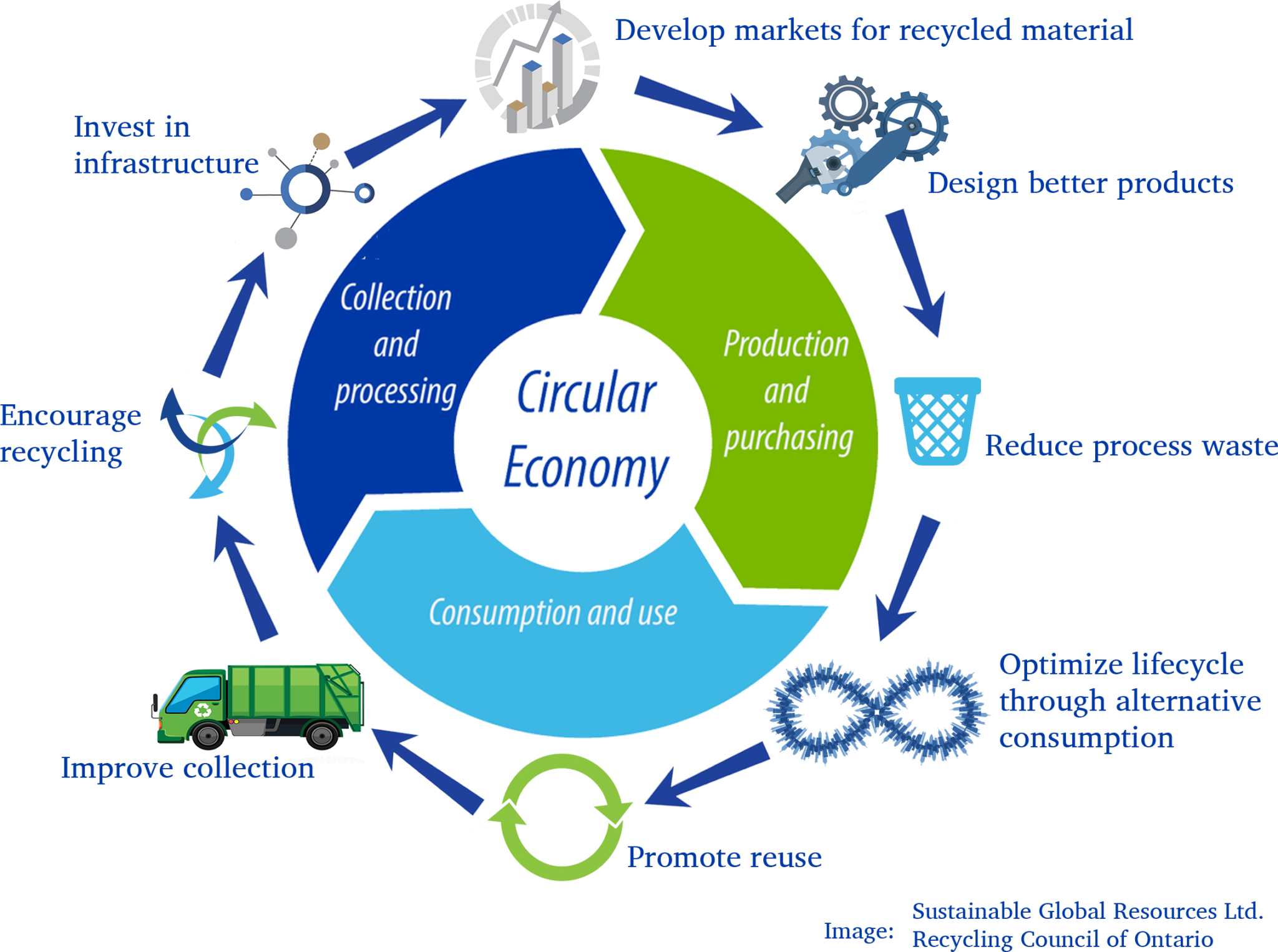
Circular Economy
Lesson Plan (Grades 10-12)
Welcome to the Circular Classroom
Community Resources
Find Community Resources including borrowing libraries, thrift stores, repairs, and equipment loans.
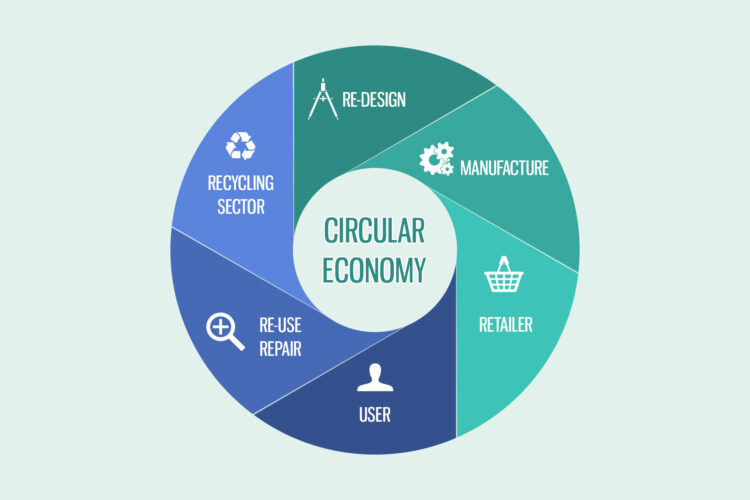
(Source: Ellen MacArthur)
Did you know? Textile waste accounts for 10% of the garbage sent to landfill. In the Annapolis Valley region, that would account for 2.3 tonnes. (Valley Waste Resource Management)
How Dirty is Your Wardrobe? Calculate your Fashion Footprint.
Textiles and the Circular Economy
A circular economy for textiles, fashion, and apparel is important because it aims to eliminate waste in the textiles industry, championing resource reuse and bringing clear benefits for natural resources, economic wellbeing, and the health and safety of the people who produce and dispose of our textiles.
Did you know the average person throws away 37 kilograms of textiles each year, and 95 per cent of those clothes could be reused or recycled? Globally, textiles waste has increased dramatically due to the rise in clothing consumption and production. (Source: Waste Reduction Week, Canada)
Related Articles
- The Circular Economy Action Agenda for Textiles
- The Impacts of Fast Fashion
- Clothes Mountains Build as Recycling Breaks Down
- Nova Scotia Employs a Novel Recycling Program To Curb Textile Waste
- The Story of Textiles
- Fashion Waste Statistics
- Halifax professor developing sustainable textile industry in Nova Scotia
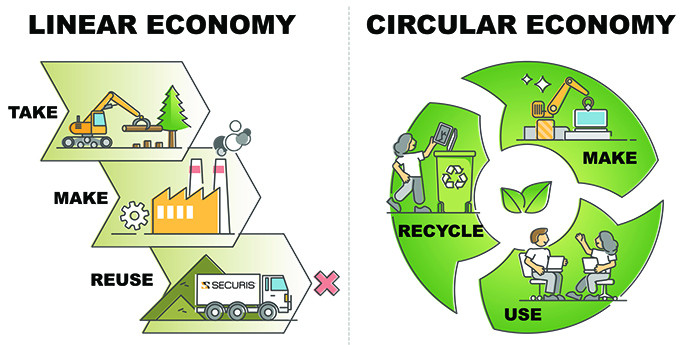
(Source: Linear vs circular economy comparison from-waste recycling viewpoint - Securis)
Did you know? The Global E-waste Monitor 2020 report found that the world dumped a record 53.6 million tonnes of e-waste last year — equivalent to the the weight of 350 cruise ships the size of the Queen Mary 2, or enough to form a line 125 kilometres long. That's an increase of 21 per cent in five years, the report said.
Just 17.4 per cent of it was recycled, meaning that an estimated $57 billion worth of gold, silver, copper, platinum and other high-value, recoverable materials used as components were mostly dumped or burned rather than being collected for treatment and reuse. (Source: CBC July 2020)
Valley Waste Fact: In the fiscal year of 2020/2021 82.22 tonnes or 82,220 kgs of electronics were sent for recycling.
E-Waste and the Circular Economy
Canada’s Environmental Products Recycling Association (EPRA) is an industry-led not-for-profit working with over 7,000 Canadian manufacturers, distributors, and retailers of electronic goods in nine provinces to ensure the safe recycling of end-of-life electronics. Collection and recycling costs are funded through environmental handling fees on designated new electronics. Over 2,400 drop off locations and 52 return-to-retail partnership locations across Canada make recycling of e-waste accessible for as many Canadians as possible.
EPRA works with recyclers who have been verified for sound environmental management practices, worker health and safety controls, data security measures, and downstream processing accountability under the national Electronics Recycling Standard. After collection and recycling, the recovered resources are returned into the manufacturing chain.
Click here to find your nearest recycling location
Related Articles
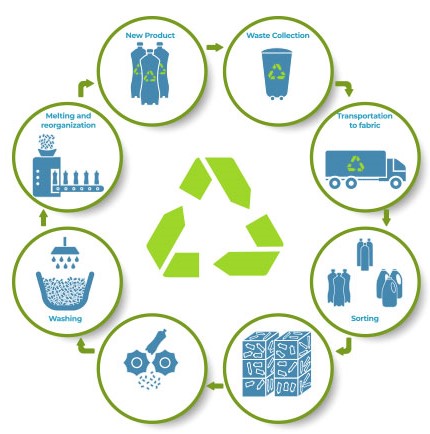
(Source: Circular Economy for Plastics - oxygreenplastics.com)
Did you know? Since the 1950s 8.3 billion tons of plastic has been generated around the world and only 23 per cent of those plastics have been recovered or recycled. It is estimated that an additional 12 billion tonnes of plastic will be lost to disposal by 2050. (Source: wrwcanada.com)
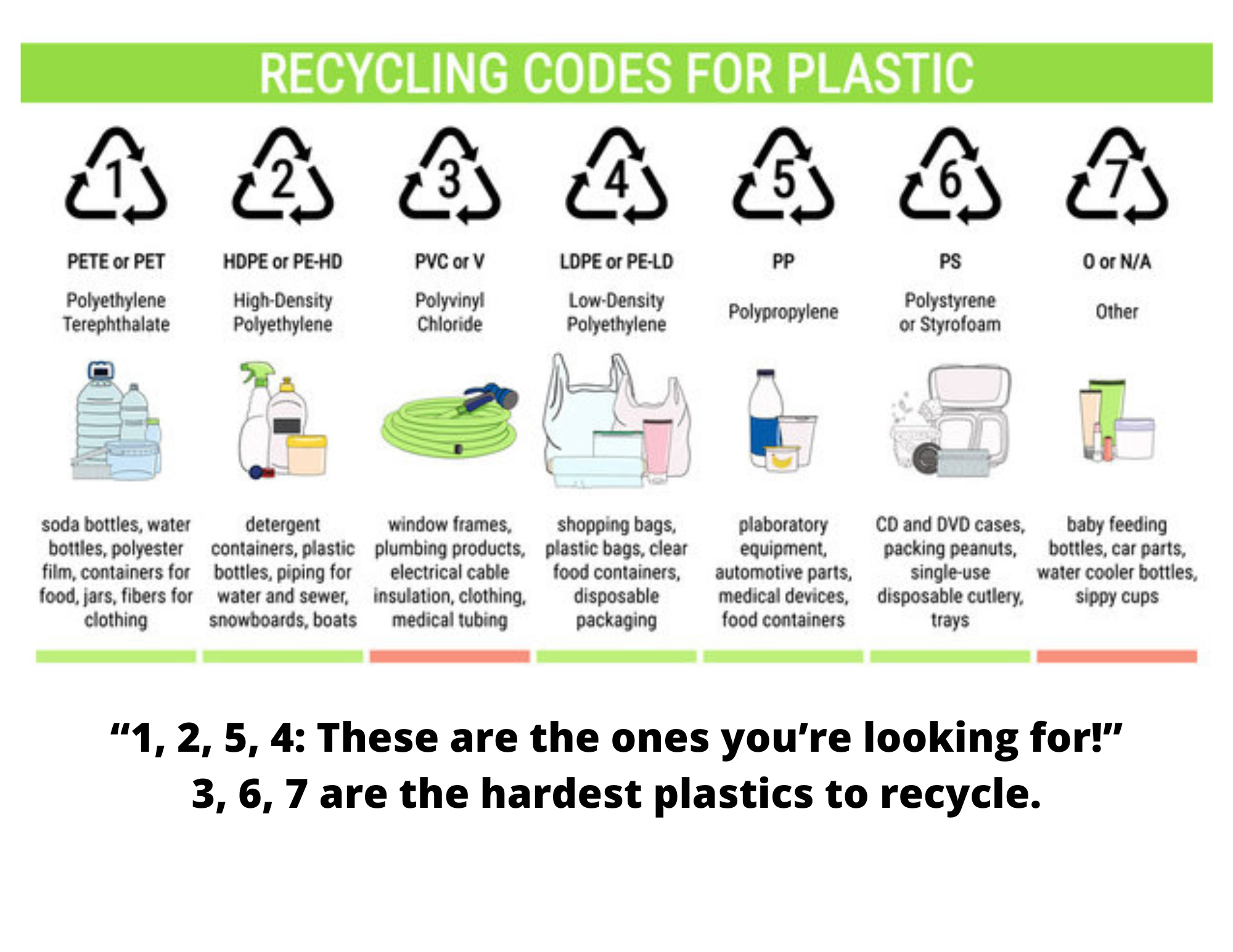
Plastics and the Circular Economy
To create a circular economy for plastic we must take three actions:
- Eliminate all problematic and unnecessary plastic items
- Innovate to ensure that the plastics we do need are reusable, recyclable, or compostable.
- Circulate all the plastic items we use to keep them in the economy and out of the environment.
As we continue to create plastic for various uses:
- Approximately 40% of the plastic produced each year is packaging, used once and thrown away.
- Only nine per cent of the 3.2 million tonnes of plastic waste Canadians produce each year is recycled.
- An estimated 8 million tonnes of plastic ends up in our oceans each year—that’s the equivalent of one garbage truck full of plastic every minute.
- By 2050, it’s estimated there will be more plastic in the ocean than fish, by weight.
- The economic value of plastic lost to waste in Canada is $8 billion yearly and expected to increase to more than $11 billion by 2030.
(Source: wrwcanada.com)
Related Articles
Understanding the numbers on Plastics
Plastic items are assigned numbers based on the type of plastic used. Some plastics are easier to recycle than others. For example, No.2 plastic is rigid and durable and can easily be made into other items. Your green compost bin is made from No.2 plastic.
Crinkly plastic, like the bags used to hold plastic cutlery is too flimsy to recycle and would disintegrate under heat. This type of plastic ends up in our garbage and then in our landfills.
When buying items, check the number on the bottom and see if it is a recyclable plastic. "1,2,5,4: these are the ones you are looking for! 3,5,7 are the hardest plastics to recycle."
Valley Waste Fact: In the fiscal year of 2020/2021 there was a total of 4812.80 tonnes of recycling (including paper, cardboard, plastic, tin, glass, cartons etc.). ~800 tonnes of plastic was sent to market for recycling. 475 tonnes was film including blue bags.
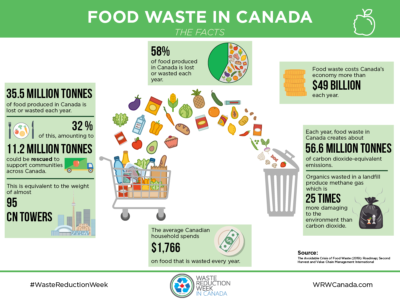
(Source: The Avoidable Crisis of Food Waste)
Did you know? 58% of food produced in Canada is either lost or wasted.
Valley Waste Fact: In the fiscal year of 2020/2021, 8,531 tonnes of organics was sent to be made into compost.
Food Waste and the Circular Economy
One-third of all food produced in the world – approximately 1.3 billion tonnes – is lost or wasted every year. Globally, if food waste could be represented as its own country, it would be the third largest greenhouse gas emitter, behind China and the U.S. The resources needed to produce the food that becomes lost or wasted has a carbon footprint of about 3.3 billion tons of CO2.
Take action to reduce your food waste by:
- Planning meals and making a grocery list
- Storing fruits and vegetables properly so they last longer
- Getting creative with leftovers
- Thinking about expiry dates
- Compost leftover organics
Related Articles
Contact us to arrange a viewing!
Just Eat It is a 74-minute documentary film about food waste and food rescue by Peg Leg Films in partnership with British Columbia's Knowledge Network.
Valley Waste can help you host a screening of this movie for your group or organization. A 50 minute version is also available for schools. Email education@vwrm.com for more information.
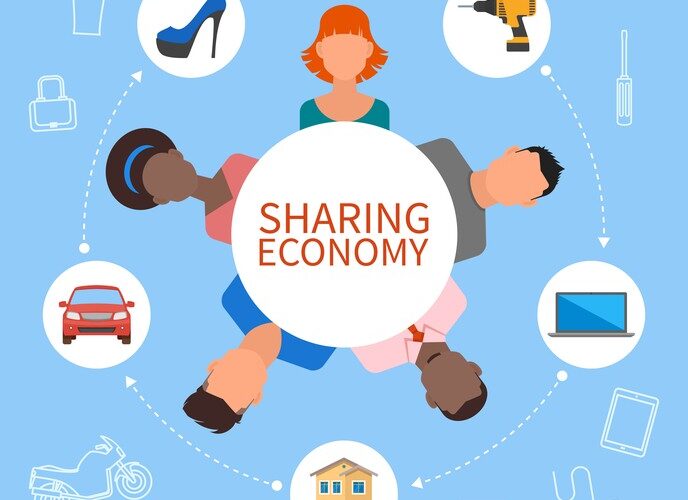
(Source: cordis.europa.eu)
Did you know? Many of the towns and villages in Kings and Annapolis Counties have recreational equipment loans. Visit the links below to find out more:
- Town of Annapolis Royal
- Town of Berwick
- Town of Kentville
- Town of Middleton
- Municipality of the County of Kings
- Village of Canning
- Village of New Minas
- Village of Port Williams
Sharing Economy
Sharing Organizations (Libraries, tool sharing, etc)
- Annapolis Royal Library
- The Annapolis Innovation Lab
- Berwick and District Library
- Bridgetown & Area Library
- Hantsport-Isabel & Roy Jodrey Memorial Library
- Kentville Library
- Kingston Library and Innovation Lab
- Lawrencetown-Dr. Frank W.Morse Memorial Library
- Middleton-Rosa M. Harvey Middleton & Area Library
- Port Williams-Murdoch C. Smith Memorial Library
- Wolfville Memorial Library and Innovation Lab Innovation Lab Open Hours | Annapolis Valley Regional Library (valleylibrary.ca)


